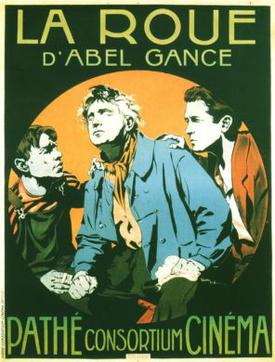Note : this review is a
contribution to The
Silent Cinema blogathon hosted by In the Good Old Days of
Classic Hollywood and Lauren Champkin.
La roue
(Abel Gance, 1923)
Sisif, a
railwayman, and his son Elie fall in love with the beautiful Norma (whom Sisif
rescued from a train crash when a baby and raised as his daughter), with tragic
results.
While at
first edited in almost a nine hours version, Gance cut it down to a 144 minutes
version. However, as many of the reviews and versions available this reviews
concerns the 273 minutes version of La
roue.
The
techniques and the storytelling of Abel Gance was sure an evolution and his
fast editing sure made those action sequences quite something. But four hour
and a half to tell a melodrama is epic. The epicness of this epic is how it is
almost unbearable to actually rank La
roue higher than Gance’s Napoleon.
Yes, exactly what I just wrote. La roue
is a nice essay for the formation of Abel Gance to perfect his craft try new
techniques and make the masterpiece that Napoleon
really is four years later. It is difficult to not compare both films and sadly
for every admirer of La roue but I find
it incomplete, overly long and a bit as if Gance was on his own with a bite he
couldn’t chew by himself. When compared to contemporary films of 1923, La roue is not as inventive as Buster Keaton’s Our Hospitality or Harold
Lloyd’s Safety Last.
On the other
hand, the cinematography and the composition of the frames is almost poetic in
its execution. Classical painting has obviously inspired Gance in his
composition of images and I can understand how visually impressive La roue is.
Overall, La roue is part of the cinematic
heritage but I’m not even sure it would make my top ten of 1923. As much as it
is memorable, Gance’s Napoleon is a
far superior film and it has left a bigger mark in the history of films.


No comments:
Post a Comment